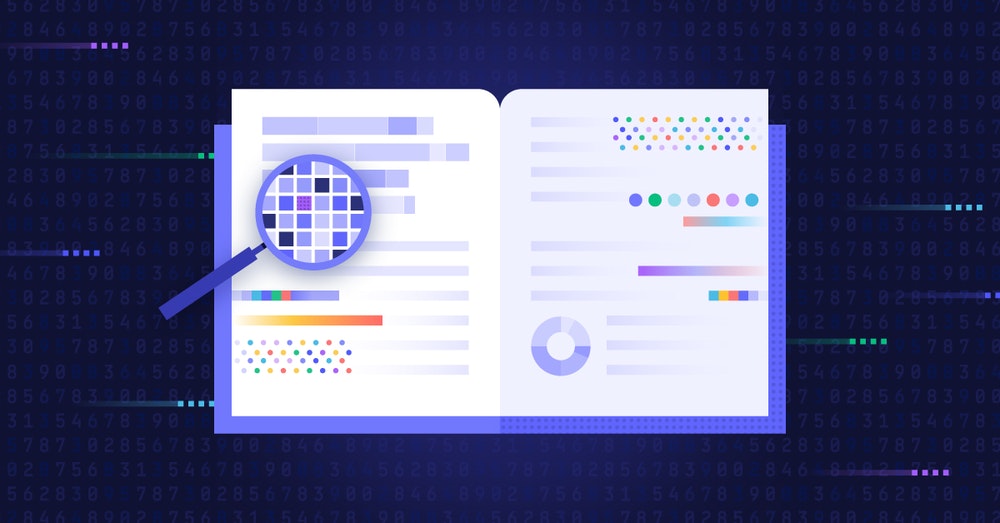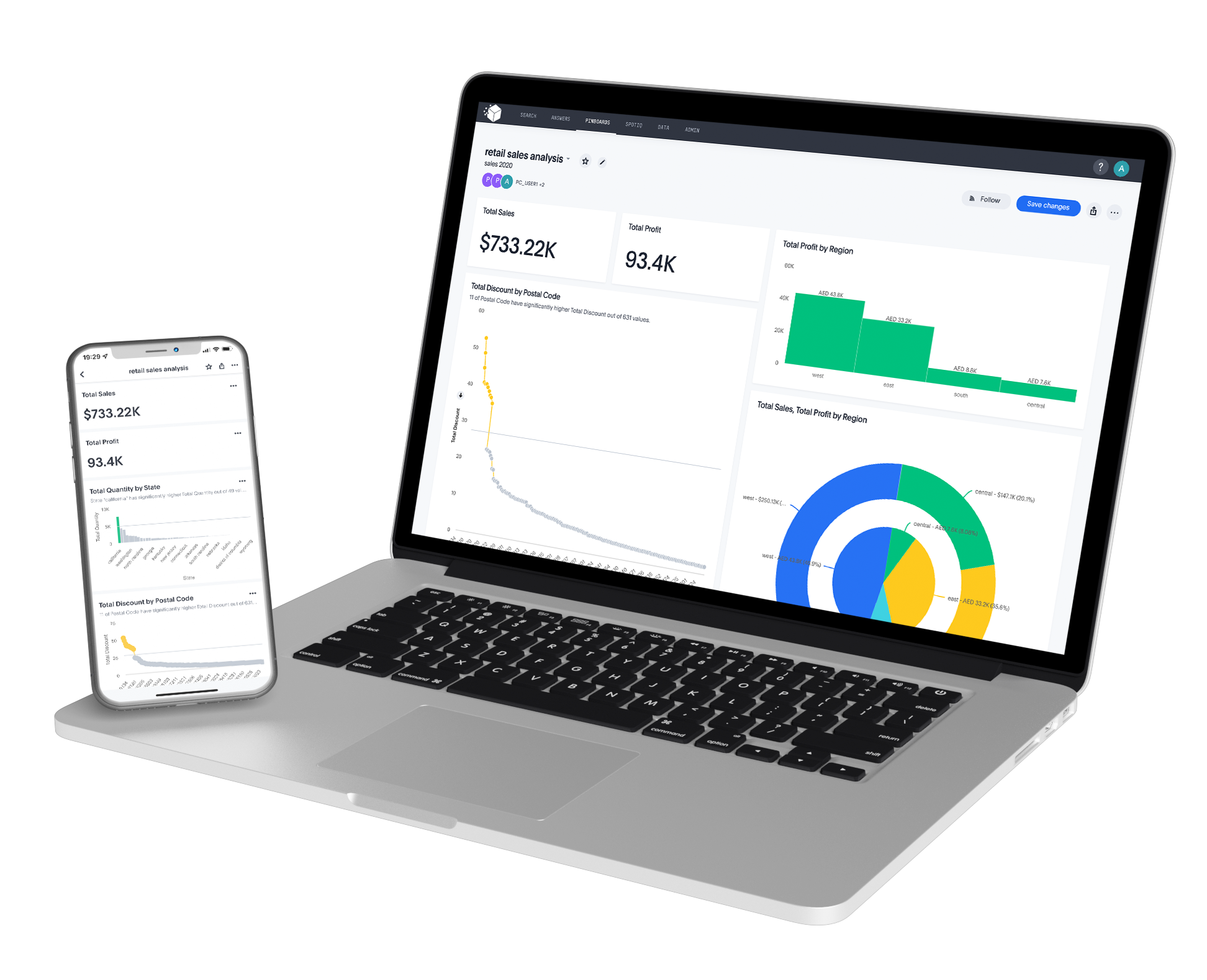Self-service analytics provides users across the business the ability to gain insights from their data, even if they don’t have analytics expertise. By giving end users the tools they need to access, visualize and explore their data, design dashboards and run reports, your IT teams, analysts and data scientists can focus on more critical strategic projects.
Self-Service Analytics
Bring your data to life.
Introducing Advanced Natural Language Search. AI-Driven Insights & Smart Suggestions. Liveboard Analytics. Prebuilt Templates.

What is self-service analytics?
What is the purpose of self-service analytics?
Today, businesses are creating and accumulating data at an incredible pace. But making that data easily available to every day users is one of the biggest hurdles to turning your data into real business value. With self-service data analytics, users can gain insights far more easily and quickly, helping organizations realize the value of their data faster.
Access to self-service analytics tools means business users no longer have to submit a request to IT or an analyst and then wait for answers that may already be outdated. Nor do they have to rely solely on intuition, which could result in poor decisions and costly mistakes.
Instead, self-service analytics facilitates a data-driven culture by giving non-technical users insights at the exact moment they need them, and informed guidance in the form of recommendations. When combined with streamlined business processes and employee training, businesses can also increase data literacy across all business functions.


What value does self-service analytics offer?
Key components of self-service analytics architecture
Self-service analytics tools have an underlying architecture that is made up of the following standardized set of components:
- Automated Data Pipelines: Self-service analytics begins with a company’s raw data, usually stored in multiple systems. The optimal data integration platform automates the entire process of replicating, ingesting and transforming this data into a data lake or data warehouse, delivering real-time, analytics-ready data streams.
- Enterprise Data Catalog: Enabling users to quickly get the data they need is critical for self-service analytics. A governed data catalog combines all of the company’s trusted data, allowing users to easily find, prepare, and publish data sets they can confidently analyze and share.
- Data Analytics Platform: A self-service data analytics platform lets business users freely explore and analyze their data with easy-to-use, interactive visualizations, charts and tables. The best self-service technologies also let users create and share their own analytics apps, dashboards and reports while offering a library of pre-built analytics assets.
- Governance: Underpinning the entire architecture is a governance layer. This includes governance processes, security and compliance, data quality controls, metadata management and data usage audits, ensuring that the right people have access to the right data and data-driven insights come from a single source of truth.

